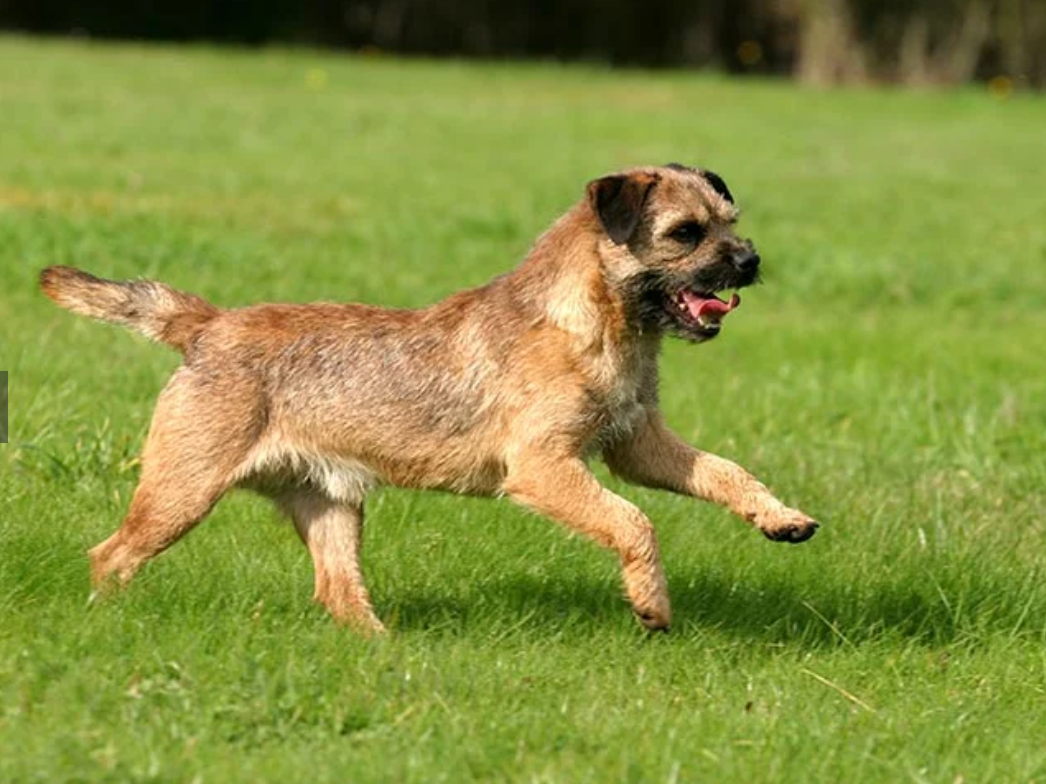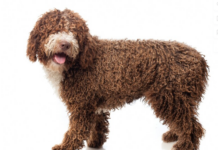Last Updated on September 18, 2024 by Dogs Vets
The Border Terrier is a small yet robust dog breed celebrated for its cheerful demeanor and plucky spirit. Known for its distinctive appearance and affectionate nature, this terrier has captured the hearts of many dog lovers.
If you’re considering adding a Border Terrier to your family, understanding their traits, care requirements, and history will help you provide the best environment for this energetic breed.

Overview and Key Traits
| Trait | Description |
|---|---|
| Height | 12-15 inches |
| Weight | 13-15.5 pounds (male), 11.5-14 pounds (female) |
| Life Expectancy | 12-15 years |
| Temperament | Affectionate, Happy, Plucky |
| Grooming Needs | Moderate; regular brushing and occasional stripping |
| Exercise Requirements | High; daily walks and playtime are essential |
Breed Traits & Characteristics
Family Life
- Affectionate with Family: Border Terriers are known for their loyalty and affection towards their family members.
- Good with Young Children: Not recommended; they may not be the best choice for households with very young children.
- Good with Other Dogs: Not recommended; they may show a strong prey drive towards other animals.
Physical Characteristics
- Size: Small to medium-sized, with a wiry coat.
- Coat Colors: Includes blue & tan, grizzle & tan, red, and wheaten.
- Unique Features: Recognizable by their “otter head” and longer legs compared to other small terriers.
Social Traits
- Temperament: Plucky and happy, making them lively companions.
- Adaptability: Adapts well to both urban and rural settings but requires regular exercise.
Personality
- Independent: While affectionate, Border Terriers have a strong independent streak.
- Playful: They enjoy exploring and playing, making them great for active families.
What To Expect When Caring For a Border Terrier
Health
Border Terriers are generally healthy but should be screened for common health issues such as hip dysplasia, progressive retinal atrophy, and juvenile cataracts. Regular check-ups and a balanced diet contribute to their well-being.
Grooming
Their wiry double coat requires weekly brushing, with more frequent grooming during shedding seasons. Avoid excessive bathing to maintain their coat’s natural oils.
Exercise
Daily exercise is crucial. A brisk walk and playtime are essential to keep them fit and mentally stimulated. Secure fencing is recommended due to their strong prey drive.
Training
Early socialization and training are important. Border Terriers are intelligent but can be stubborn, so positive reinforcement methods work best.
Nutrition
A high-quality dog food appropriate for their age and activity level is recommended. Monitor their weight to prevent obesity.
Frequently Asked Questions
- What is the average lifespan of a Border Terrier? The average lifespan of a Border Terrier is 12 to 15 years. Regular veterinary care and a healthy lifestyle can help ensure they live a long, healthy life.
- How do Border Terriers interact with strangers? Border Terriers may be reserved with strangers. Proper socialization from a young age can help them become more comfortable around new people.
- Can Border Terriers live in apartments? Yes, Border Terriers can adapt to apartment living if they receive adequate exercise and mental stimulation. Regular walks and play sessions are crucial.
- Are Border Terriers good with other pets? Border Terriers may not always get along with other pets, particularly small animals. Their strong prey drive means they might chase or harass other animals.
- What are the grooming needs of a Border Terrier? Border Terriers require regular brushing to manage their wiry coat and prevent matting. During shedding seasons, more frequent grooming is needed to remove dead hair.

















